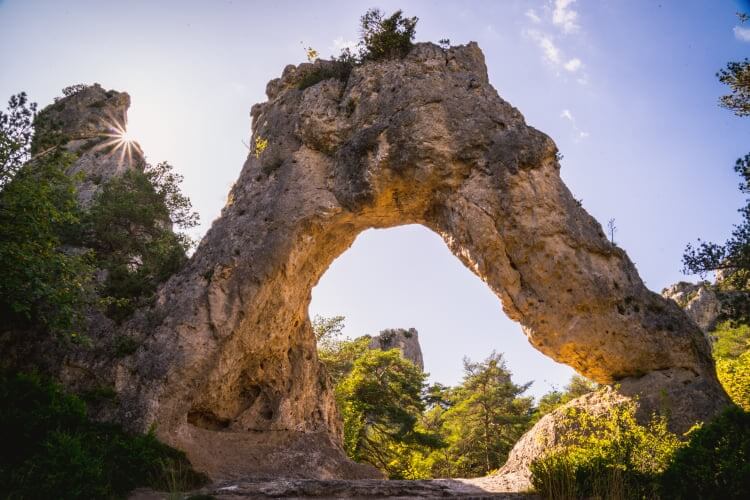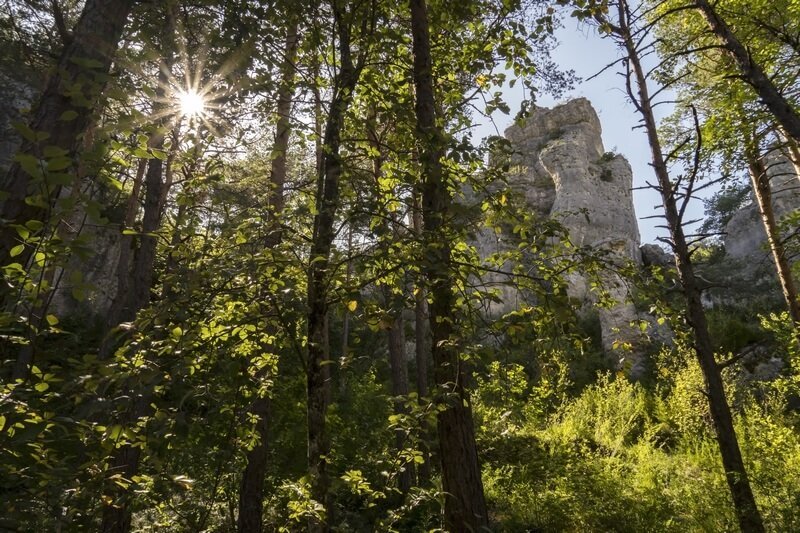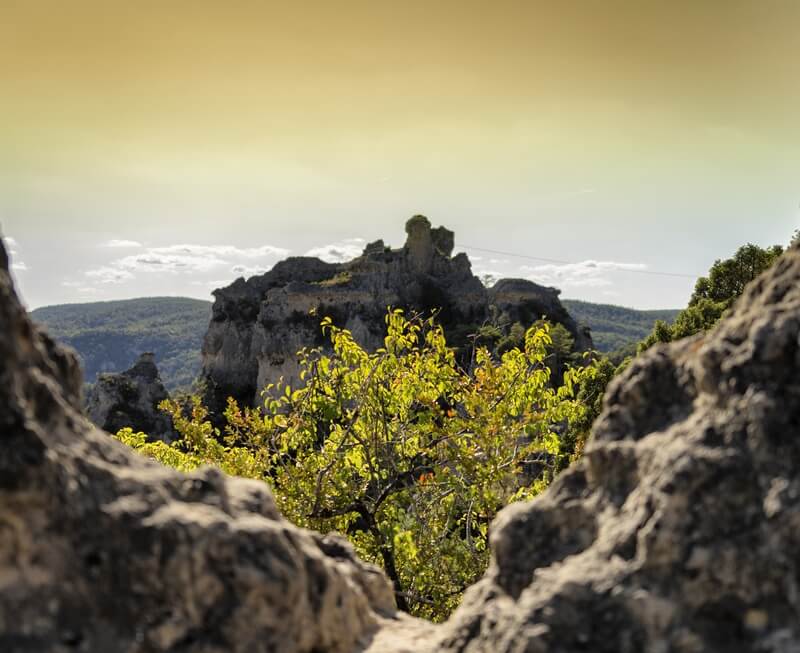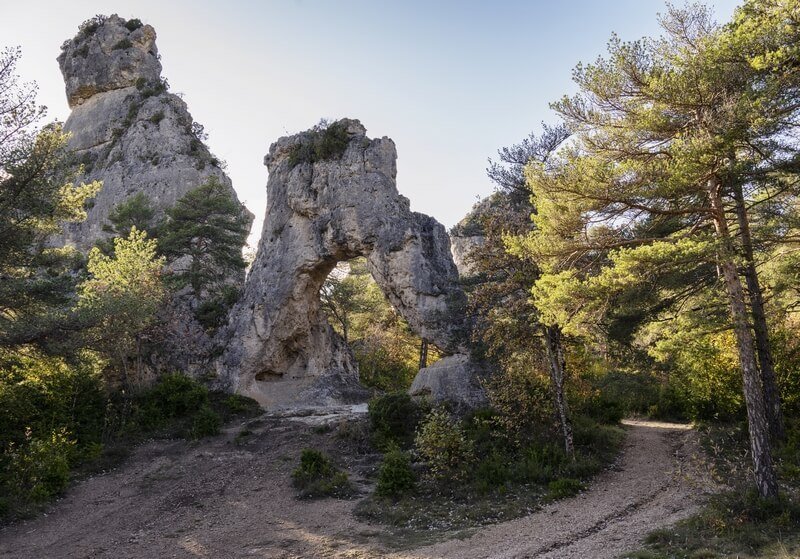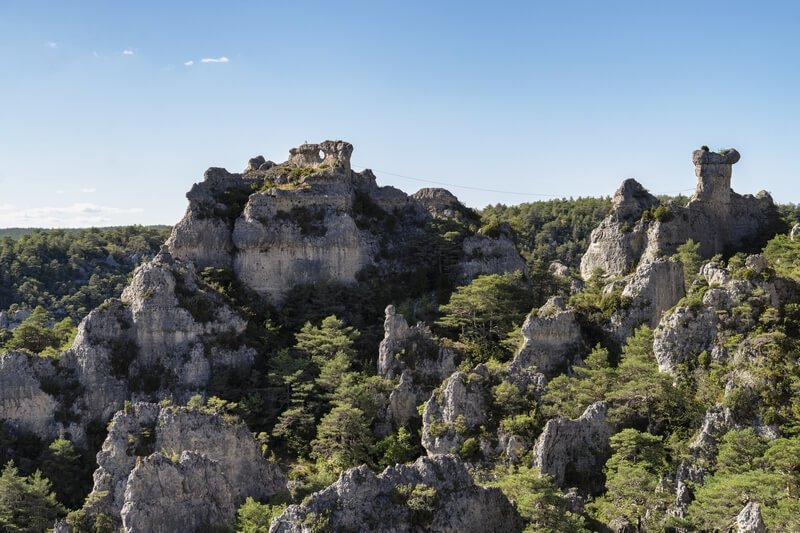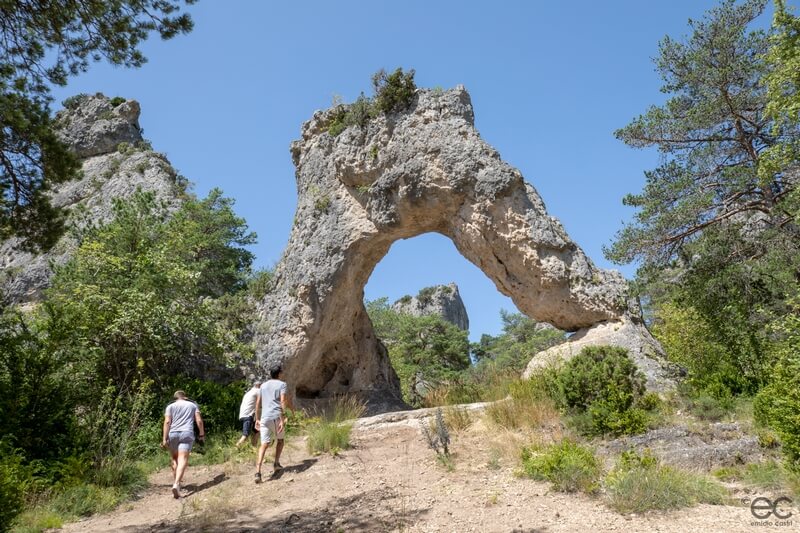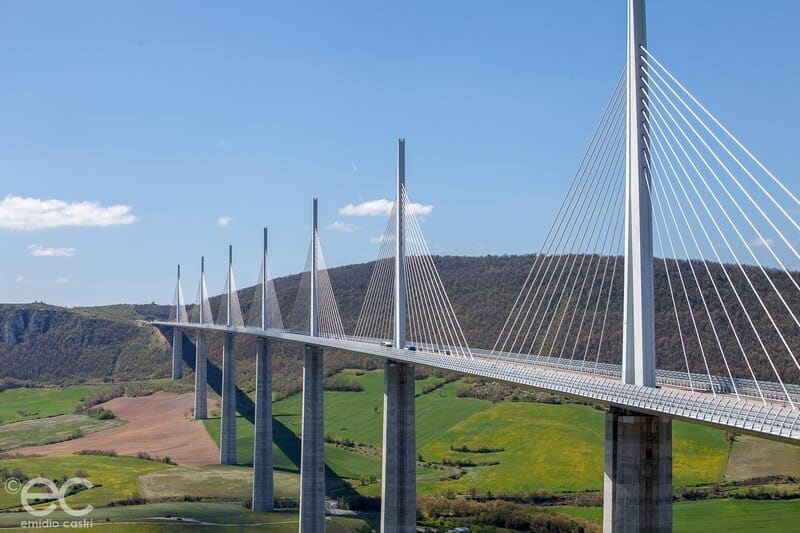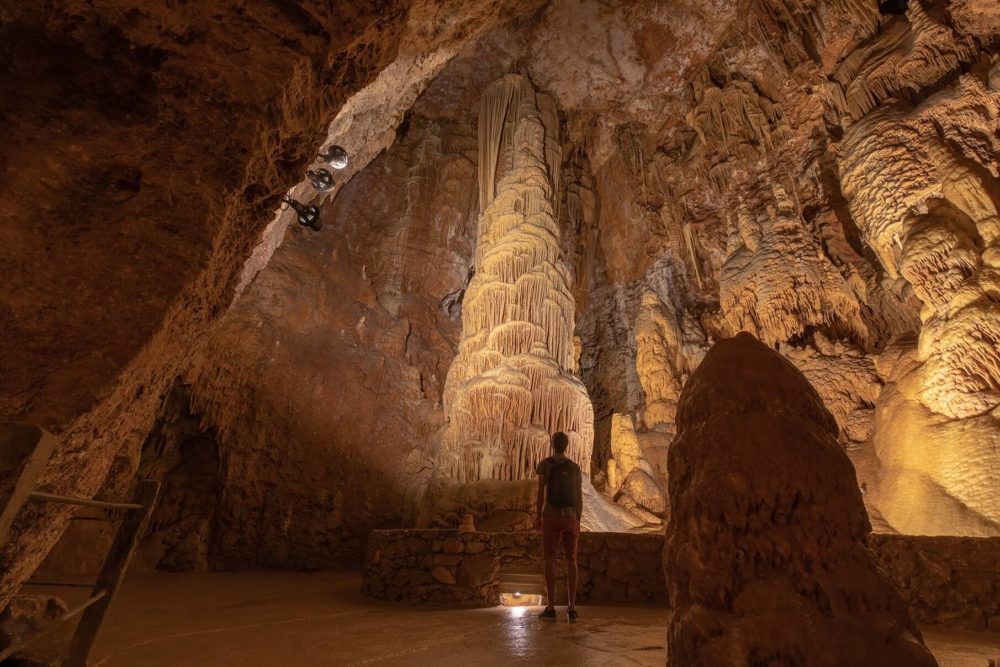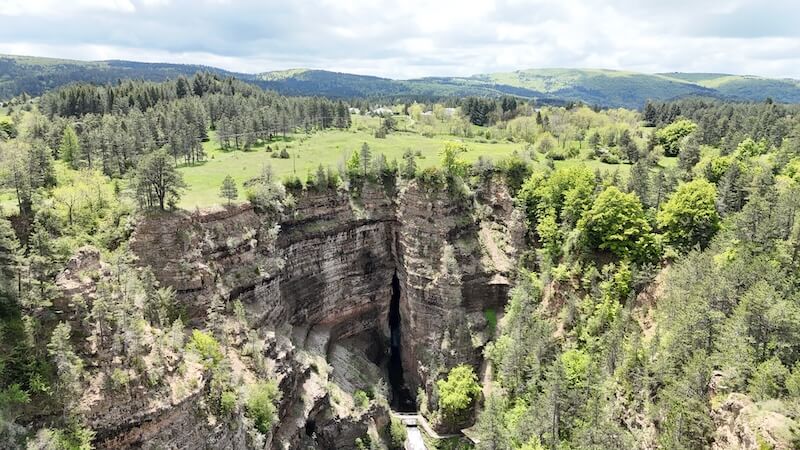La Cité de Pierres, an imaginary town designed by nature 15 km from Millau
Explored in 1884 by Edouard-Alfred Martel, La Cité de Pierres covers 120 hectares in the heart of the Causse Noir at Montpellier-le-Vieux (Millau – Aveyron).
A listed site, 15km from Millau and Le Rozier, the Cité de Pierres offers sumptuous landscapes and unusual rock formations. The Mycenae Gate, one of the most emblematic, is a masterpiece of nature and was the setting for the film La Grande Vadrouille, starring Bourvil and De Funès.
Relive E.A Martel’s exploration, from a few hours to a full day, and discover the Cité de Pierres at your leisure.
Let the history of this mysterious city be told to you on board the little train, fly over it in zip-lines and via ferrata, or just wander around in complete safety on itineraries lasting from 50 minutes to 4 hours.
With Explor’Games, take on the challenge of the Arche des Mystères (Mystery Arch) with your family or friends: an outdoor treasure hunt and digital enigma game. Alongside Martel, free the Amathis civilisation that has been petrified for thousands of years.
Take the time to come and recharge your batteries in the heart of this 120-hectare nature reserve, whether you’re looking for relaxation or sport.
A little history: the geological origins of the Cité de Pierres
The geological origins of this impressive chaos of limestone rock date back to the Jurassic period.
At that time, 170 million years ago, the warm, shallow waters of the tropical sea covered the Causse Noir.
They sheltered a reef made up of algae and coral where numerous specimens of sponges, molluscs, sea urchins and crustaceans flourished.
Over time (several million years), the remains and skeletons of these organisms covered the seabed, creating a 300-metre-thick layer of limestone.
It is this sedimentary basin that today forms the rocky plateau of the Causse Noir.
The water flowing through these cracks is causing the Causse Noir to corrode.
The action of the elements will widen the passages, transforming them into alleys, cul-de-sacs, walls and circuses, thus tracing the plan and architecture of La Cité de Pierres.


